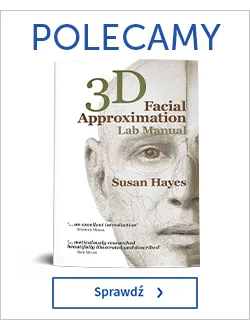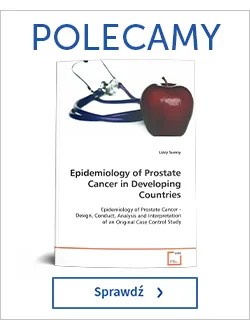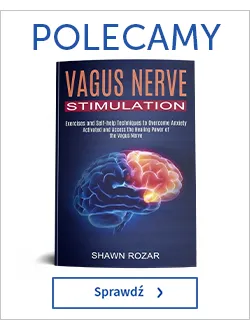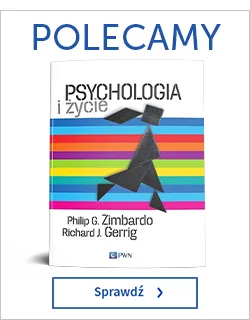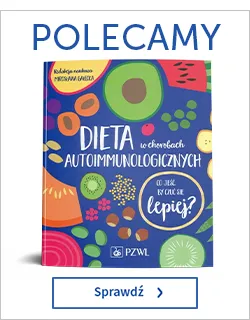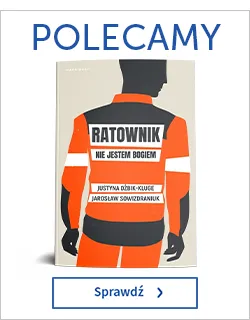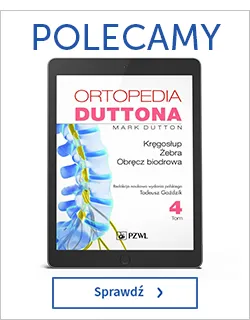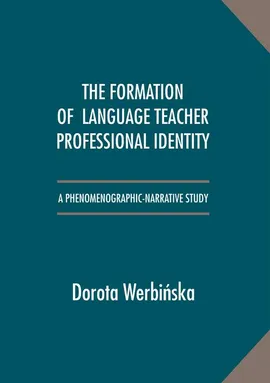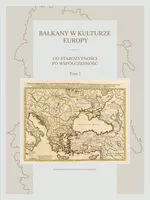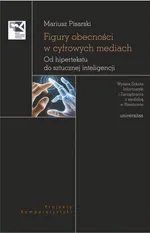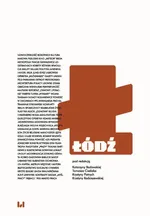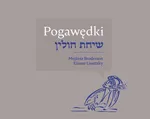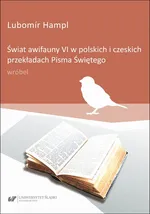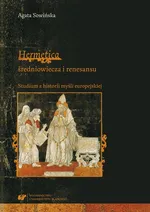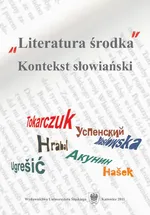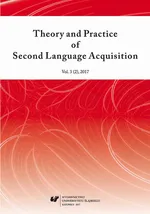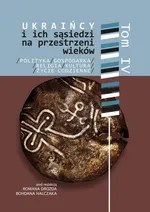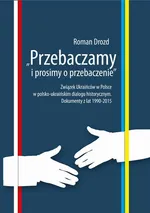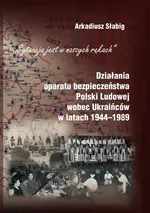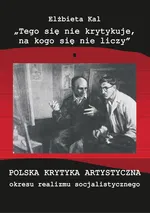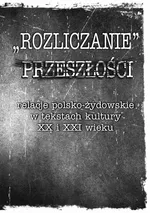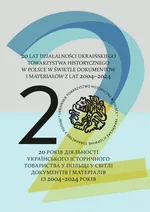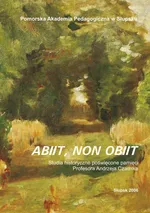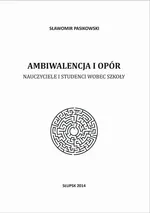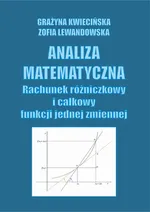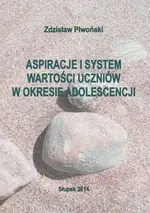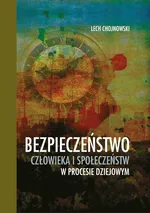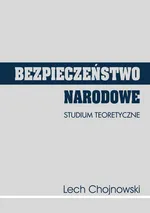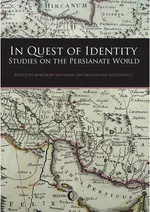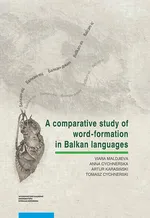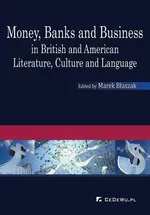- Kategorie:
- Język wydania: angielski
- ISBN: 978-83-7467-274-0
- ISBN druku: 978-83-7467-274-0
- Liczba stron: 530
-
Sposób dostarczenia produktu elektronicznegoProdukty elektroniczne takie jak Ebooki czy Audiobooki są udostępniane online po uprzednim opłaceniu (PayU, BLIK) na stronie Twoje konto > Biblioteka.Pliki można pobrać zazwyczaj w ciągu kilku-kilkunastu minut po uzyskaniu poprawnej autoryzacji płatności, choć w przypadku niektórych publikacji elektronicznych czas oczekiwania może być nieco dłuższy.Sprzedaż terytorialna towarów elektronicznych jest regulowana wyłącznie ograniczeniami terytorialnymi licencji konkretnych produktów.
-
Ważne informacje techniczne
-
Minimalne wymagania sprzętowe:
- procesor: architektura x86 1GHz lub odpowiedniki w pozostałych architekturach
- Pamięć operacyjna: 512MB
- Monitor i karta graficzna: zgodny ze standardem XGA, minimalna rozdzielczość 1024x768 16bit
- Dysk twardy: dowolny obsługujący system operacyjny z minimalnie 100MB wolnego miejsca
- Mysz lub inny manipulator + klawiatura
- Karta sieciowa/modem: umożliwiająca dostęp do sieci Internet z prędkością 512kb/s
-
Minimalne wymagania oprogramowania:
- System Operacyjny: System MS Windows 95 i wyżej, Linux z X.ORG, MacOS 9 lub wyżej, najnowsze systemy mobilne: Android, iPhone, SymbianOS, Windows Mobile
- Przeglądarka internetowa: Internet Explorer 7 lub wyżej, Opera 9 i wyżej, FireFox 2 i wyżej, Chrome 1.0 i wyżej, Safari 5
- Przeglądarka z obsługą ciasteczek i włączoną obsługą JavaScript
- Zalecany plugin Flash Player w wersji 10.0 lub wyżej.
-
Informacja o formatach plików:
- PDF - format polecany do czytania na laptopach oraz komputerach stacjonarnych.
- EPUB - format pliku, który umożliwia czytanie książek elektronicznych na urządzeniach z mniejszymi ekranami (np. e-czytnik lub smartfon), dając możliwość dopasowania tekstu do wielkości urządzenia i preferencji użytkownika.
- MOBI - format zapisu firmy Mobipocket, który można pobrać na dowolne urządzenie elektroniczne (np.e-czytnik Kindle) z zainstalowanym programem (np. MobiPocket Reader) pozwalającym czytać pliki MOBI.
- Audiobooki w formacie MP3 - format pliku, przeznaczony do odsłuchu nagrań audio.
-
Rodzaje zabezpieczeń plików:
- Watermark - (znak wodny) to zaszyfrowana informacja o użytkowniku, który zakupił produkt. Dzięki temu łatwo jest zidentyfikować użytkownika, który rozpowszechnił produkt w sposób niezgodny z prawem.
- Brak zabezpieczenia - część oferowanych w naszym sklepie plików nie posiada zabezpieczeń. Zazwyczaj tego typu pliki można pobierać ograniczoną ilość razy, określaną przez dostawcę publikacji elektronicznych. W przypadku zbyt dużej ilości pobrań plików na stronie WWW pojawia się stosowny komunikat.
The Formation of Language Teacher Professional Identity
(eBook)A Phenomenographic–Narrative Study
-
Druk: Słupsk, 2017
-
Wydanie/Copyright: wyd. 1
-
Autor: Dorota Werbińska
-
Wydawca: Uniwersytet Pomorski w Słupsku
-
Formaty:
PDF (Watermark)WatermarkZnak wodny czyli Watermark to zaszyfrowana informacja o użytkowniku, który zakupił produkt. Dzięki temu łatwo jest zidentyfikować użytkownika, który rozpowszechnił produkt w sposób niezgodny z prawem. Ten rodzaj zabezpieczenia jest zdecydowanie najbardziej przyjazny dla użytkownika, ponieważ aby otworzyć książkę zabezpieczoną Watermarkiem nie jest potrzebne konto Adobe ID oraz autoryzacja urządzenia.
The Formation of Language Teacher Professional Identity
It is because I see the examination of teacher identity as fundamental to understanding who teachers are and what they do in the language classroom that I have chosen to write this book. I hope this endeavour helps the area of language teacher identity research advance and better shapes our understanding of the complex nature of the formation of language teacher identity.
INTRODUCTION 11 CHAPTER ONE Identity: Selected Conceptual Issues 18 Introduction 18 1.1 Theoretical Constructs of Identity 18 1.1.1 Essentialist Concepts of Identity 19 1.1.2 Poststructuralist Concepts of Identity 21 1.1.3 Narrative and Discursive Concepts of Identity 23 1.1.4 Identity Constructs – Summing up 26 1.2 Basic Identity Distinctions 27 1.2.1 Social Identity 27 1.2.2 Personal Identity 28 1.2.3 Professional Identity 28 1.2.3.1 Marcia’s Statuses of Identity and Professional Identity 29 1.2.3.2 Moral Development and Professional Identity 31 1.3 Current Conceptualizations of Identity 32 1.3.1 Wenger’s (1998) Communities of Practice 33 1.3.2 Gee’s (2001) Identities 34 1.3.3 Varghese et al.’s (2005) Views on Identity 36 1.3.4 Clarke’s (2009) Diagram for Identity Work 36 1.3.5 Benson et al.’s (2013) Facets of Identity 38 1.3.6 Pennington’s (2015) Frames of Teacher Identity 38 1.3.7 Trent’s (2015) Framework 39 1.3.8 Pulling it Together: A Diagram for Three-A Teacher Identity Framework (3ATIF) 40 1.4 Conclusion of Chapter One 43 CHAPTER TWO Language Teacher Identity Framework: A Theoretical Perspective 44 Introduction 44 2.1 The Construction of Professional Identity 45 2.2 Language Teacher Affiliation 46 2.2.1 Teacher Professionalism 47 2.2.2 Ethicality 49 2.2.3 Proximity and Positioning 50 2.2.4 Imagined Communities 53 2.2.5 Globality and Locality 54 2.2.6 Investment 55 2.2.7 Language Teacher Affiliation – Summing up 56 2.3 Language Teacher Attachment 57 2.3.1 Language Teaching Practice 58 2.3.2 Traditional vs. Constructivist Teaching 61 2.3.3 Language Teacher Attachment – Summing up 62 2.4 Language Teacher Autonomy 63 2.4.1 Teacher Agency 64 2.4.2 Teacher Reflection 66 2.4.3 Teacher Resilience 68 2.4.4 Language Teacher Autonomy – Summing up 69 2.5 Affiliation-Attachment-Autonomy – Summing up 70 2.6 Other Theoretical Concepts 72 2.6.1 Continuities 72 2.6.2 Discontinuities 73 2.7 Approaches to Language Teacher Change 74 2.7.1 Norton’s Identity Approach 74 2.7.2 Possible-Selves Theory 76 2.7.3 Pulling it Together: A Diagram for Three-A Language Teacher Identity Framework (3ALTIF) 78 2.8 Conclusion of Chapter Two 78 CHAPTER THREE Research on Language Teacher Identity: A Review 81 Introduction 81 3.1 Investigating Identity 82 3.1.1 Conversation Analysis 82 3.1.2 Critical Discourse Analysis 84 3.1.3 Narrative Analysis 85 3.2 Research on Teacher Professional Identity 86 3.2.1 North American Studies 87 3.2.2 European Studies 88 3.2.3 Australasia 93 3.2.4 The Far East 94 3.2.5 Israel 94 3.2.6 South Africa 94 3.2.7 Summary of General Education Teacher Identity Research 95 3.3 Research on Language Teacher Professional Identity 95 3.3.1 Language Teacher Identity: Focus on Identity Formation (Group One) 96 3.3.2 Language Teacher Identity: Focus on Teacher Affiliation (Group Two) 105 3.3.3 Language Teacher Identity: Focus on Teacher Attachment (Group Three) 116 3.3.4 Language Teacher Identity: Focus on Teacher Autonomy (Group Four) 122 3.3.5 Research on Teacher Identity in Poland 129 3.4 Conclusion of Chapter Three 132 CHAPTER FOUR Empirical Research on Language Teacher Professional Identity: Methodology 133 Introduction 133 4.1 Statement of Purpose 133 4.2 Methodological Focus 134 4.2.1 Phenomenographic Perspective 136 4.2.2 Narrative Perspective 138 4.3 Context and Participants 141 4.4 Design of the Study 142 4.4.1 Stage One 143 4.4.2 Stage Two 143 4.4.3 Stage Three 144 4.4.4 Stage Four 145 4.4.5 Four Teachers’ Trajectories 146 4.5 Data Collection 146 4.6 Data Analysis 154 4.6.1 General Information 154 4.6.2 Creating Phenomenographic Maps 156 4.6.3 Restorying 159 4.6.4 Working with Metaphors 159 4.7 Researcher’s Position 160 4.8 Characteristics of the Study 162 4.8.1 Validity and Credibility 162 4.8.2 Reliability and Dependability 164 4.8.3 Generalizability and Transferability 165 4.9 Methodological and Ethical Challenges 165 4.9.1 Methodological Challenges 166 4.9.2 Ethical Dilemmas 167 4.10 Conclusion of Chapter Four 169 CHAPTER FIVE Empirical Research on Language Teacher Professional Identity: A Phenomenographic Study 171 Introduction 171 5.1 Stage One: Aims and Context 171 5.1.1 Preliminary Study 172 5.1.1.1 Procedure 173 5.1.1.2 Findings 173 5.1.2 Affiliation-Shaped Identity 179 5.1.2.1 Procedure 180 5.1.2.2 Findings 181 5.1.3 Attachment-Shaped Identity 200 5.1.3.1 Procedure 200 5.1.3.2 Findings 201 5.1.4 Autonomy-Shaped Identity 223 5.1.4.1 Procedure 223 5.1.4.2 Findings 223 5.2 Stage Two: Aims and Context 230 5.2.1 Affiliation-Shaped Identity 231 5.2.1.1 Procedure 231 5.2.1.2 Findings 232 5.2.2 Attachment-Shaped Identity 247 5.2.2.1 Procedure 248 5.2.2.2 Findings 248 5.2.3 Autonomy-Based Identity 270 5.2.3.1 Procedure 270 5.2.3.2 Findings 270 5.3 Stage Three: Aims and Context 284 5.3.1 Procedure 285 5.3.2 Affiliation-Shaped Identity 286 5.3.3 Attachment-Shaped Identity 310 5.3.4 Autonomy-Shaped Identity 319 5.4 Stage Four: Aims and Context 329 5.4.1 Procedure 330 5.4.2 Affiliation-Shaped Identity 331 5.4.3 Attachment-Shaped Identity 349 5.4.4 Autonomy-Shaped Identity 356 5.5 Discussion 364 5.6 Conclusion of Chapter Five 390 CHAPTER SIX Empirical Research on Language Teacher Identity: Four Narrative Studies 391 Introduction 391 6.1 Aims 391 6.2 Participants 392 6.3 Data Collection 395 6.4 Data Analysis 395 6.5 Narrative Stories 397 6.5.1 Vera’s Story (She intended to become a language teacher and works as one) 397 6.5.2 Peter’s Story (He intended to become a language teacher but doesn’t work as one now) 408 6.5.3 Iza’s Story (She did not intend to become a language teacher but now works as one) 420 6.5.4 Jacob’s story (He did not intend to become a language teacher and doesn’t work as one) 427 6.6 Discussion 434 6.7 Conclusion of Chapter Six 442 Conclusions, Limitations, Implications, and Further Research 444 REFERENCES 453 APPENDICES 484 Appendix A 484 Appendix B 485 Appendix C 486 Appendix D 508 Appendix E 509 Appendix F 510 Appendix G 511 Appendix H 511 List of Figures Figure 1-1: The creation of Teacher Identity Framework (3ATIF) 41 Figure 2-1: Language teacher affiliation subdomains 56 Figure 2-2: Language teacher attachment subdomains 63 Figure 2-3: Language teacher autonomy subdomains 69 Figure 2-4: The Three A Language Teacher Identity Framework (3ALTIF) 79 Figure 5-1: WTTFL statements and language teacher metaphors (Stage One) 182 Figure 5-2: WTTFL statements and language teacher metaphors (Stage Two) 233 Figure 5-3: WTTFL statements and language teacher metaphors (Stage Three) 287 Figure 5-4: WTTFL statements and language teacher metaphors (Stage Four) 332 Figure 5-5: Continuities and discontinuities-shaped 3ALTIF (Stage One) 367 Figure 5-6: Continuities and discontinuities-shaped 3ALTIF (Stage Two) 373 Figure 5-7: Continuities and discontinuities-shaped 3ALTIF (Stage Three) 379 Figure 5-8: Continuities and discontinuities-shaped 3ALTIF (Stage Four) 384 List of Tables Table 3.1: Overview of language teacher professional identity studies with a focus on teacher formation 98 Table 3.2: Overview of language teacher professional identity studies with a focus on teacher affiliation 106 Table 3.3: Overview of language teacher professional identity studies with a focus on teacher attachment 117 Table 3.4: Overview of language teacher professional identity studies with a focus on teacher autonomy 123 Table 4.1: Groups, stages of the study and the number of participants 141 Table 4.2: The employment of research instruments 147 Table 4.3: Excerpt of data transcription 155 Table 5.1: Ways of understanding language studies with a teaching profile 174 Table 5.2: Metaphors-derived images of teachers (Stage One) 184 Table 5.3: Affiliation-shaped identity (Stage One) 188 Table 5.4: Attachment-shaped identity (Stage One) 202 Table 5.5: Autonomy-shaped identity (Stage One) 224 Table 5.6: Metaphors-derived images of teachers (Stage Two) 234 Table 5.7: Affiliation-shaped identity (Stage Two) 238 Table 5.8: Attachment-shaped identity (Stage Two) 249 Table 5.9: Autonomy-shaped identity (Stage Two) 271 Table 5.10: Metaphors-derived images of teachers (Stage Three) 288 Table 5.11: Affiliation-shaped identity (Stage Three) 293 Table 5.12: Attachment-shaped identity (Stage Three) 311 Table 5.13: Autonomy-shaped identity (Stage Three) 319 Table 5.14: Information about participants and data collection in Stage Four 330 Table 5.15: Affiliation-shaped identity (Stage Four) 334 Table 5.16: Attachment-shaped identity (Stage Four) 349 Table 5.17: Autonomy-shaped identity (Stage Four) 356 Table 6.1: Case study participants 394 Table 6.2: Data collection instruments for constructing the participants’ stories 395
-
Inne autora
-
Inne z kategorii
-
Inne wydawcy
Inni Klienci oglądali również
In Quest of Identity. Studies on the Persianate World
red. Mirosław Michalak, Magdalena RodziewiczStability and changeability of identities, especially in the context of their disappearance and revival, is one of the leitmotifs of the current publication, which is a fruit of a collective effor...
Christmas Teacher Resources
Jak narodziła się tradycja kolędowania?Co znaczyły życzenia kolędników was hail?Czy dziś rozumiemy staroangielskie kolędy?Kto pierwszy całował się pod jemiołą?Jak rodzina królewska wylansowała modę na świąteczną ch...
Polish and Hebrew Literature and National Identity
During many meetings and conversations in the last ten years about ourprofession or even one could say passion – literature, we had the impressionthat there is much in common between our two literatures – Polish andHebrew....
A comparative study of word-formation in Balkan languages
Introduction / 9A. General issues (Viara Maldjieva)Chapter IA model for a comparative study of word-formation in Balkan languages / 131. A comparative study of word-formation / 132. The basic concepts of the de...
Money, Banks and Business in British and American Literature, Culture and Language
This monograph should be of interest to a wide range of readers because money, banks and business have been an integral part of history of all societies as well as an experience shared by each one of us. The book is divided into two parts - the more ex...
Work, Enterprise, Career in the English Language, Literature and Culture
This monograph focuses on the ever topical issues of work, enterprise and career in the English language, literature and culture.Its first part is devoted to language studies and analyses the metaphors of work in the English translation of ...
Recenzje
Nikt nie dodał jeszcze recenzji. Bądź pierwszy!
Zgłoś nadużycie



